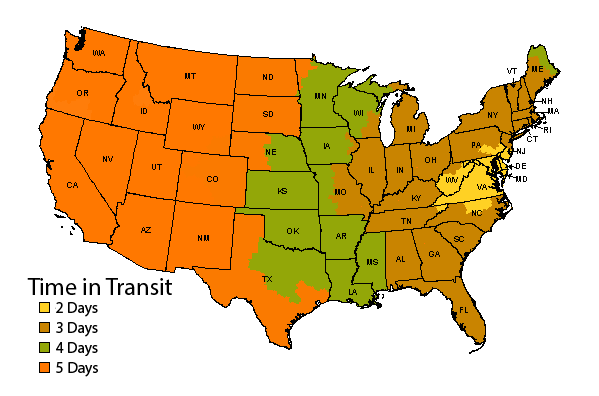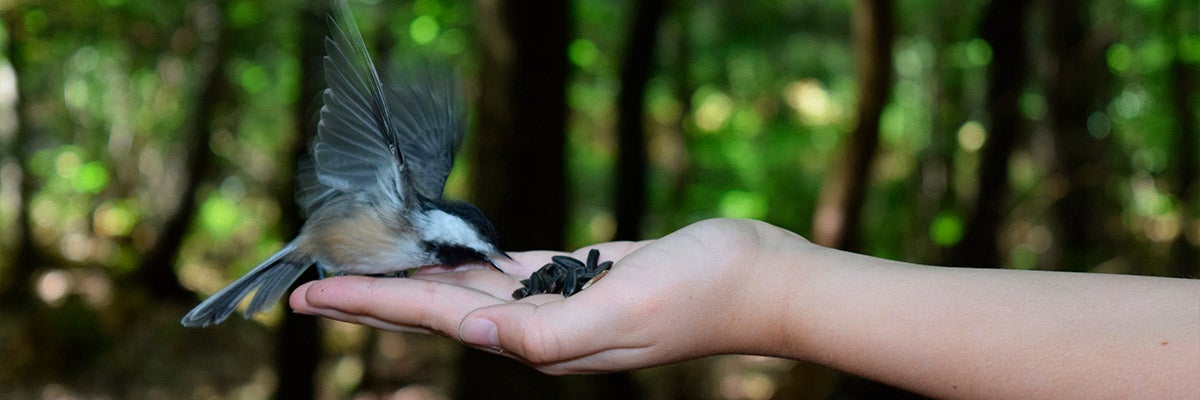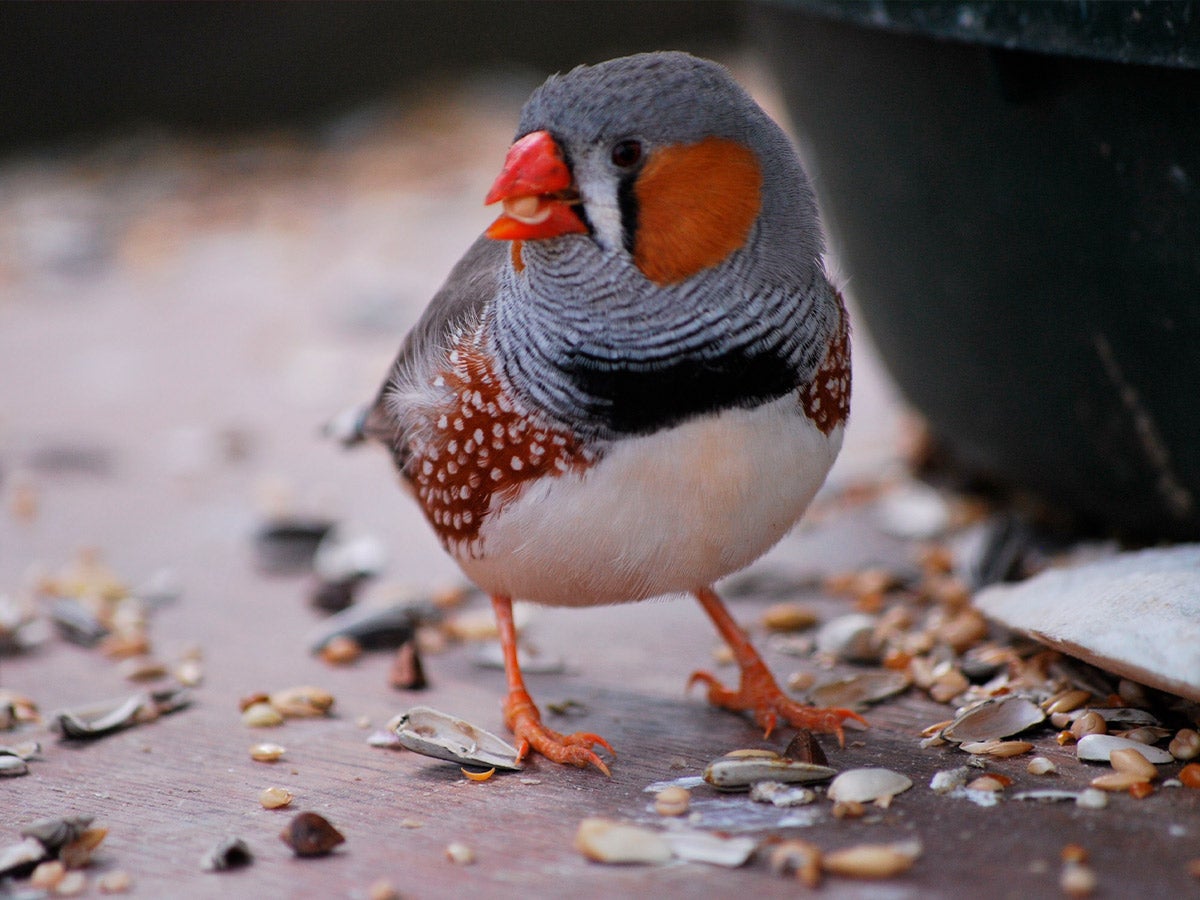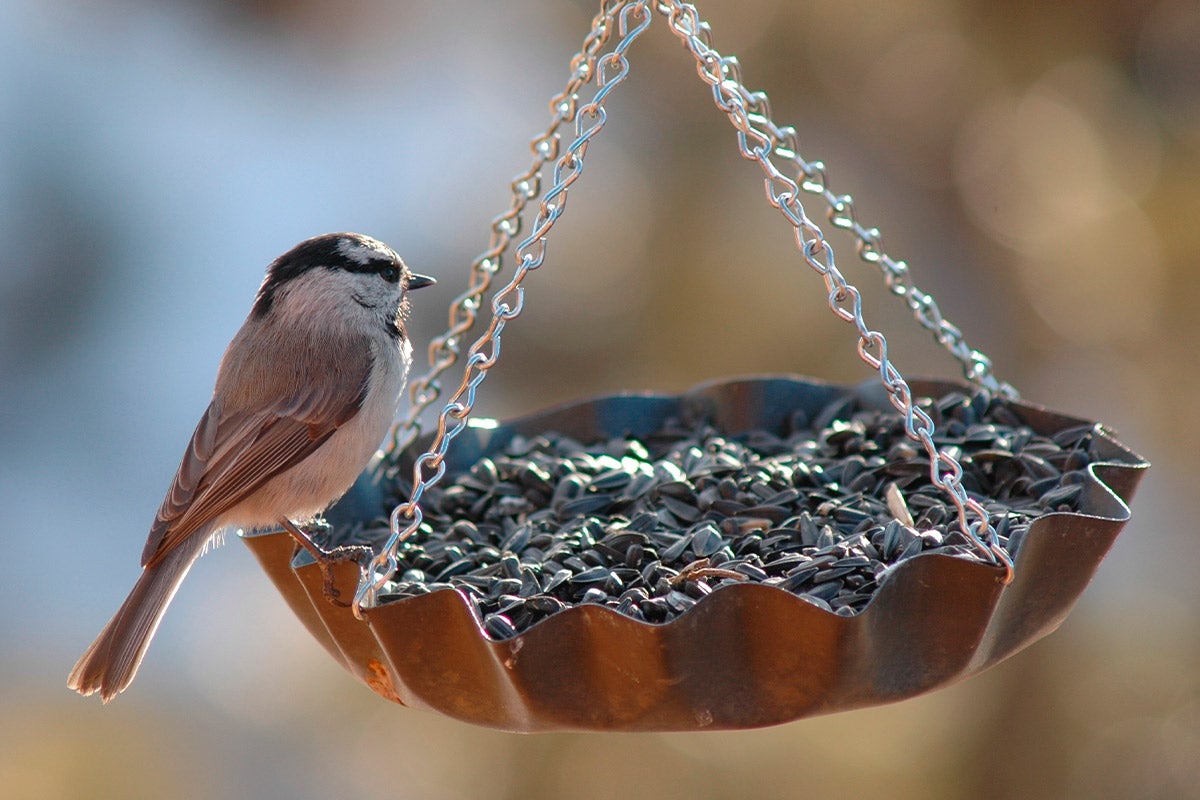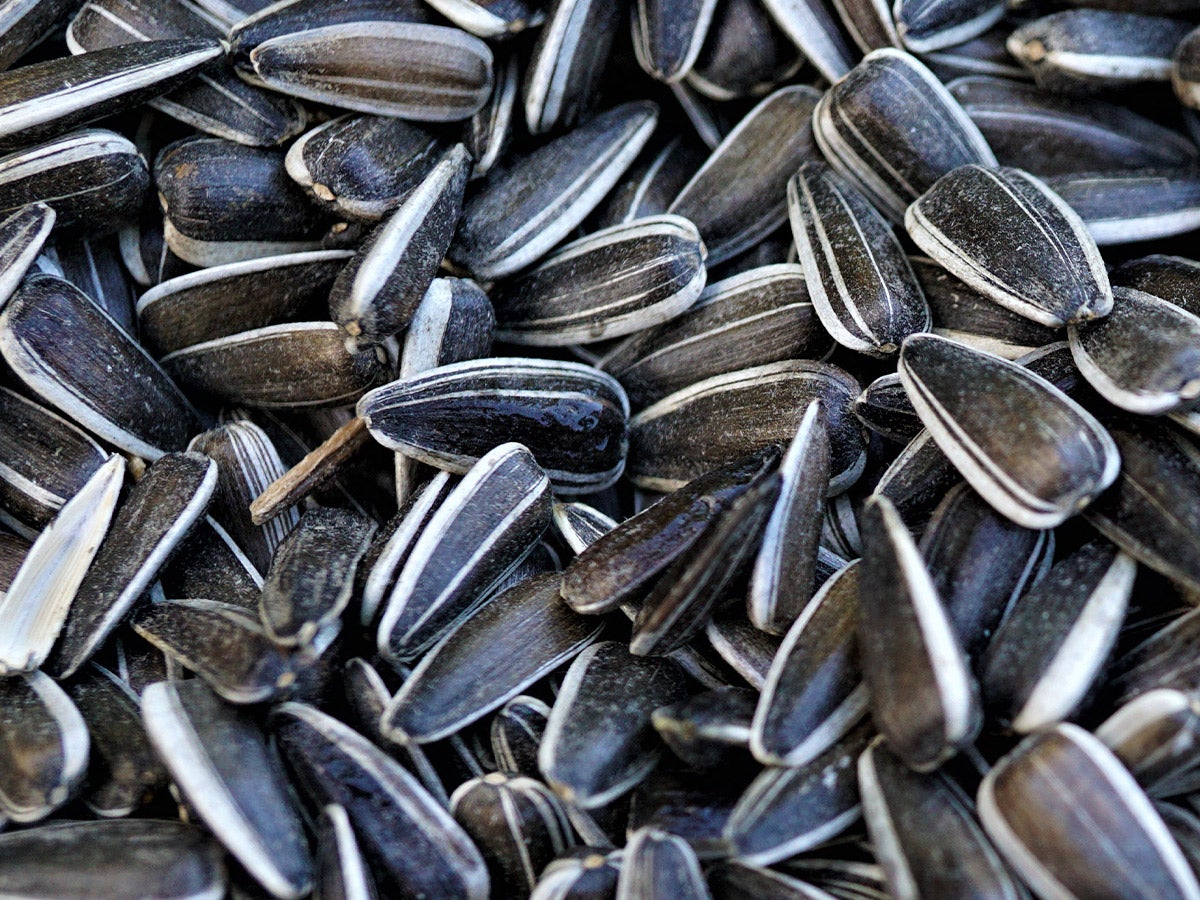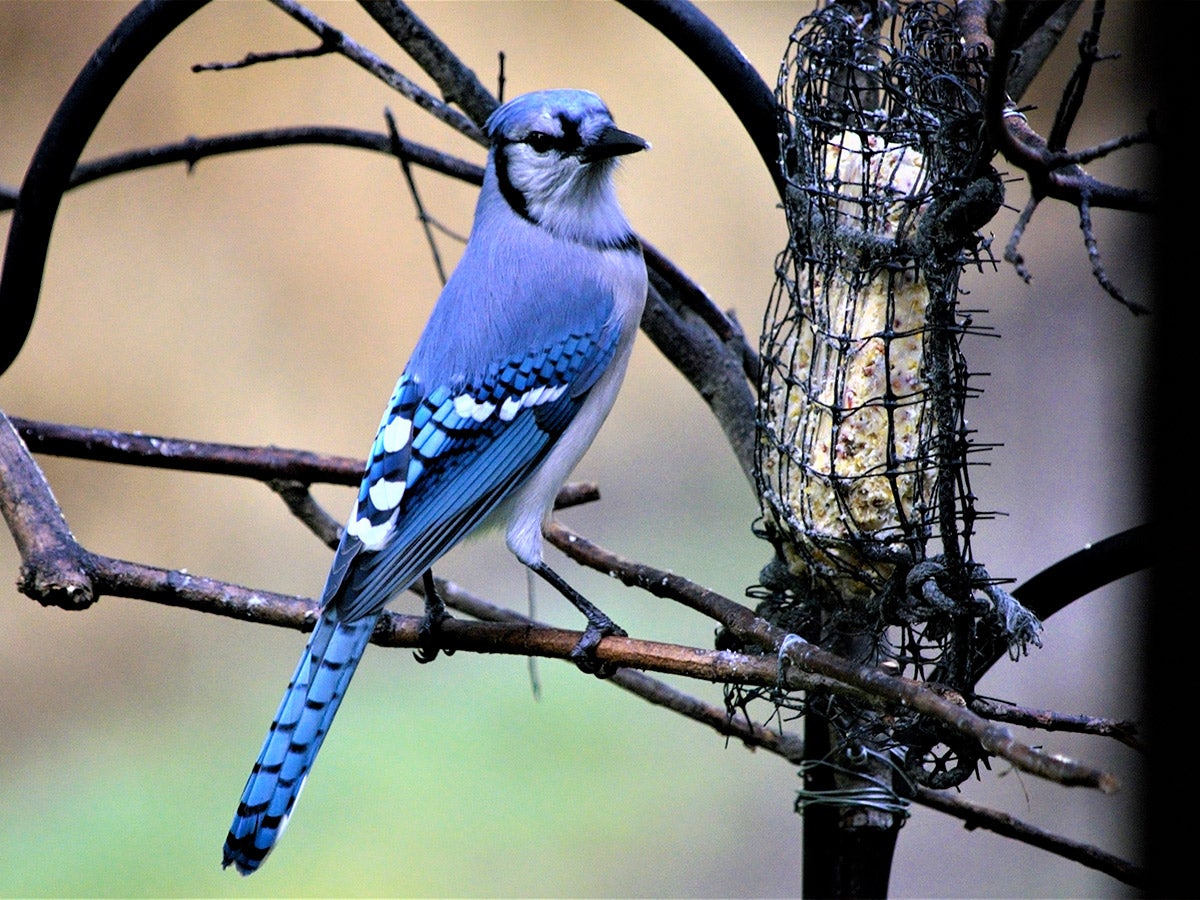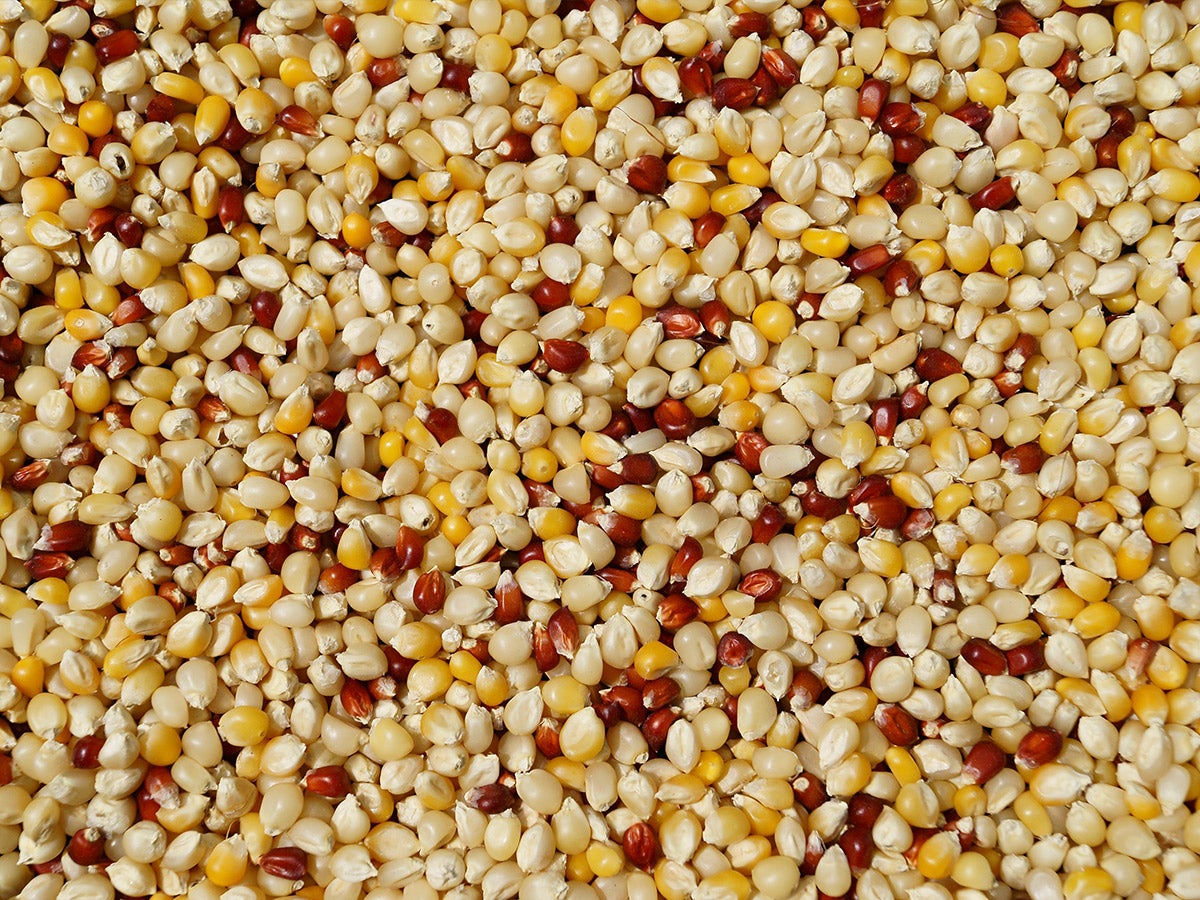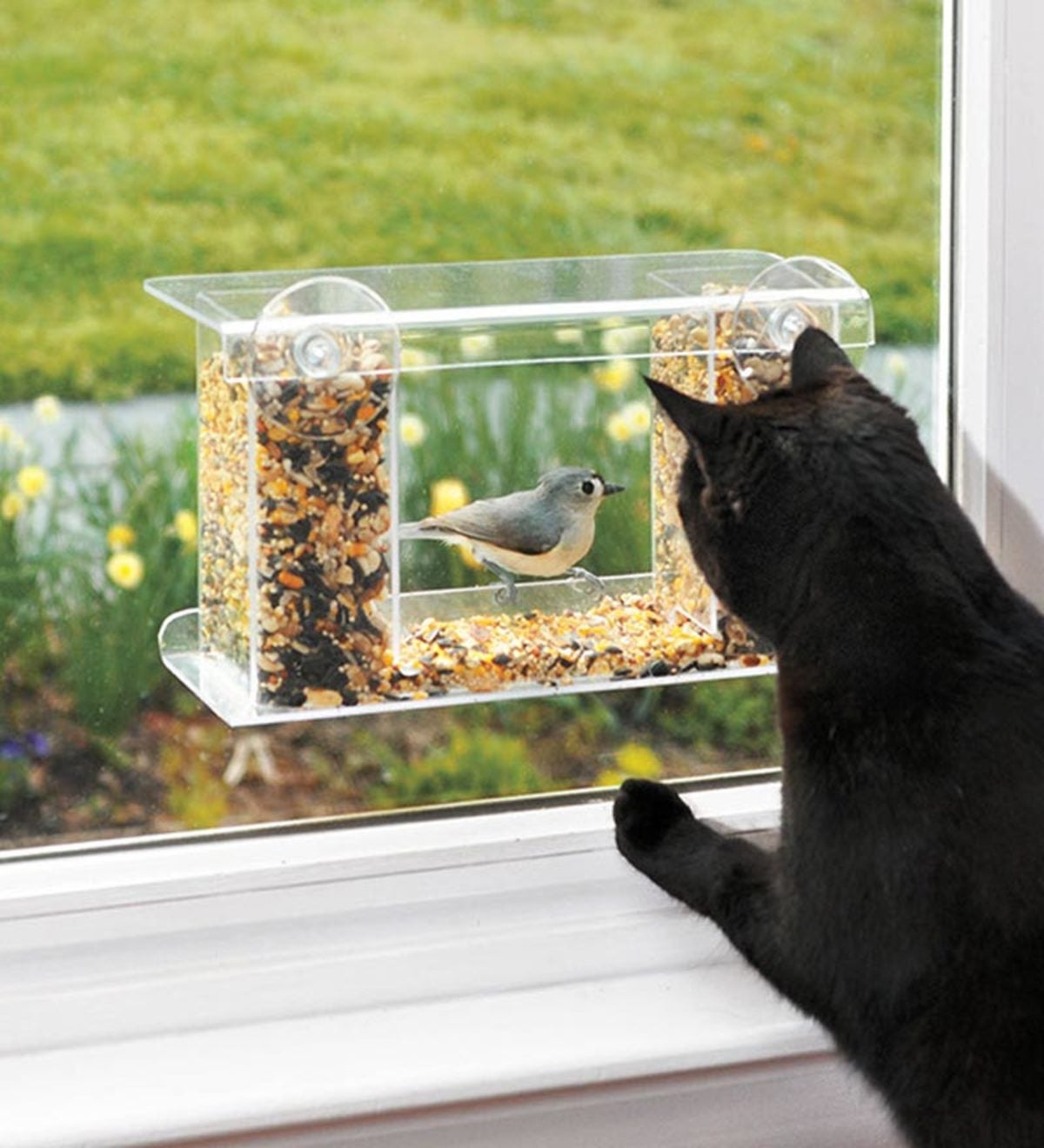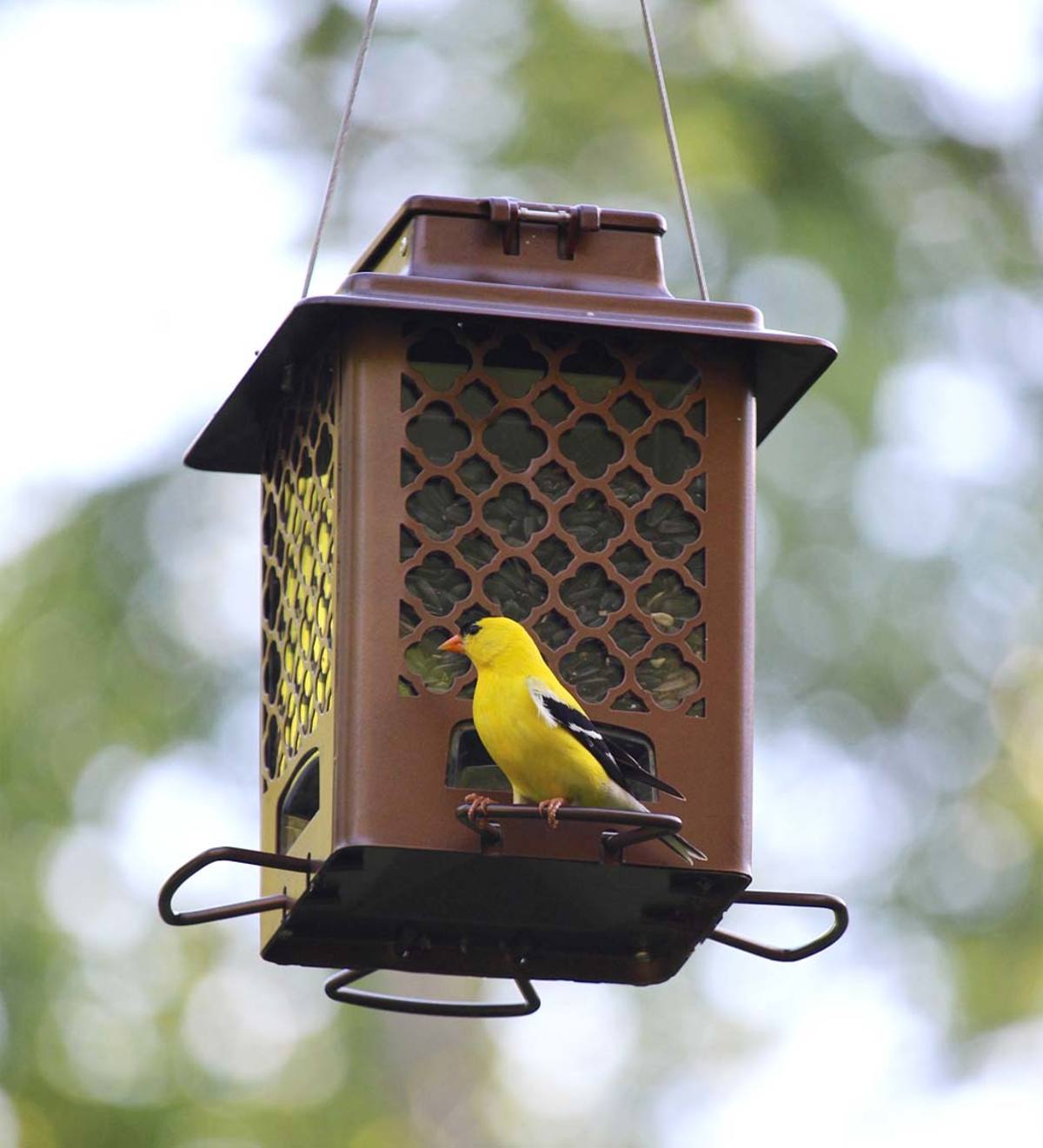Safflower is an extremely nutritious flower seed favored by songbirds such as doves, titmice, finches, nuthatches and cardinals. It’s a great food choice, particularly because squirrels, starlings and grackles generally leave it alone.
Nyjer (or Thistle Seed) is nutritious, with high oil, fat and protein content. While expensive, this seed leaves little waste. This can be fed on the ground or in feeders with small openings or fine mesh so it won’t blow away. Nyjer is a favorite of goldfinches. Look for a finch feeder, one that’s designed for tiny seeds.
Suet is animal fat available in concentrated cakes. It can be fed any time of year, but due to its content and possible spoilage in warm weather, many people only offer it in fall and winter. This is when the birds need it most. It can be purchased commercially, and there are also DIY recipes available. It’s served in suet cages, which the birds cling to while they feed.
